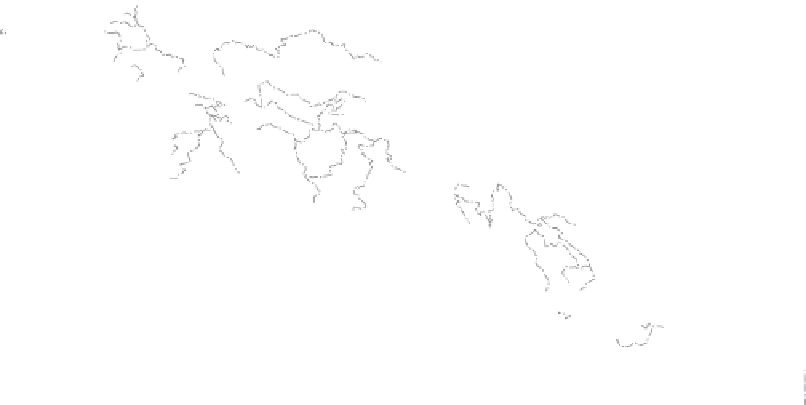Geography Reference
In-Depth Information
13
Arctic Circle
13
13
13
1
5
60
°
3
60
°
2
2
1
3
13
3
1
2
3
1
4
12
1
2
1
3
13
3
4
ATLANTIC
5
2
1
5
12
13
3
12
2
2
6
9
OCEAN
5
2
2
2
2
6
40
°
40
°
2
6
5
2
6
2
6
9
8
8
6
13
6
2
9
13
2
PACIFIC
2
2 2
7
2
9
7
7
8
13
10
2
2
9
13
8
5
Tropic of Cancer
8
2
9
11
20
°
13
8
8
11
10
8
11
13
OCEAN
8
8
10
7
8
8
10
5
10
13
10
10
10
8
11
8
7
11
11
8
10
10
7
7
7
7
13
8
7
7
INDIAN
10
10
11
8
7
Equator
11
0
°
10
7
7
7
11
10
1
1
7
OCEAN
8
7
7
11
8
11
7
7
8
11
11
10
10
7
10
ATLANTIC
11
12
10
7
8
13
10
7
20
°
20
°
20
°
20
°
20
°
13
7
7
Tropic of Capricorn
7
13
11
5
12
OCEAN
3
10
12
5
7
1
4
4
6
6
6
4
6
1
1
40
°
40
°
40
°
12
1
12
12
3
0
°
20
°
40
°
60
°
100
°
120
°
140
°
160
°
60
°
60
°
60
°
60
°
SOUTHERN
OCEAN
Antarctic Circle
Also, the withholding of produce by exporting countries
may stimulate domestic production among importers.
For example, although cane sugar accounts for more than
70 percent of the commercial world sugar crop each year,
farmers in the United States, Europe, and Russia produce
sugar from sugar beets. In Europe and Russia, these beets
already yield 25 percent of the annual world sugar har-
vest. Collective action by countries producing sugarcane
could easily cause that percentage to increase.
When cash crops are grown on large estates, we use
the term
plantation agriculture
to describe the produc-
tion system. Plantations are colonial legacies that persist
in poorer, primarily tropical, countries along with sub-
sistence farming. Figure 11.18 shows that plantation
agriculture (7 in the legend) continues in Middle and
South America, Africa, and South Asia. Laid out to pro-
duce bananas, sugar, coffee, and cocoa in Middle and
South America, rubber, cocoa, and tea in West and East
Africa, tea in South Asia, and rubber in Southeast Asia,
these plantations have outlasted the period of decoloni-
zation and continue to provide specialized crops to
wealthier markets. Many of the most productive planta-
tions are owned by European or American individuals or
corporations.
Multinational corporations have tenaciously pro-
tected their economic interests in plantations. In the 1940s
and 1950s, the Guatemalan government began an agrarian
reform program. The plan entailed renting unused land























































































































































































































































































































































































































































































































































































































































































































































































































































































































































